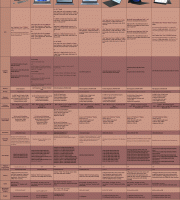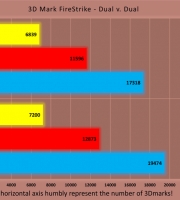


German company RME has, for almost a decade, been revered in the audio engineering industry for designing and producing some of the most reliable, versatile and – many would claim in view of their class leading performance and build quality – affordable components available to the professionally minded user, let’s leave out such terms as “semi-pro” and “pro” when the former so gracefully accommodates both!
Aside from technical excellence, RME’s products, from the very outset, offered full compatibility with a comprehensive range of third party applications, thereby representing a perfect and consistent alternative to, for example, a long term Adobe Audition user such as myself, who might otherwise have been forced to invest even more in an “industry standard” Pro-Tools based setup.
Since Avid Audio’s acquisition of Digidesign at the end of 2010 and the subsequent release of Pro-Tools 9, Pro-tools no longer requires its parent company’s proprietary hardware in order to function hence, one’s weapon of choice is far less of a dilemma .
With this in mind, it could hardly be a more fitting time to examine one of RME’s latest works of art, the crown jewel amid their current range of external interfaces, the Fireface UFX.
Once upon a time, centuries ago….in 2004, RME conceived and created its venerable Fireface 800, a revolutionary product whose high quality preamps, reference level A/D D/A converters and ingeniously designed drivers, promptly defined a spectacular new standard for firewire-based audio capture.
Though it was generally assumed that the UFX would be the 800’s fervently anticipated successor, RME has demonstrated another of its rare and admirable traits as a company, loyalty to the long-term user. They are adamant that their new unit shall in no way be treated as a direct replacement and have pledged full, ongoing driver development and technical assistance to all owners of either or both…who says there’s only room at the top for one?!
So what of this fresh and delectable sonic marvel?
As with the Fireface 800, the UFX’s gamut of features is conveniently contained within a traditional 1U rack mountable chassis, the dimensions of which are identical to its elder sibling.
Zooming in on the front left, we can observe four balanced microphone inputs. Each benefits from a dedicated, digitally controlled, high-transparency preamp, adjustable over a range of 65db and based on the same core technology as those found in RME’s eight channel “Micstacy”, a significant step-up from the 800. These preamps hand duty over to 8 A/D converters – two assigned to each preamp – which work in parallel to deliver an exceptionally high signal-to-noise ratio of 115dbs(a). Moreover, unlike the traditional XLR sockets of the 800, these are combo connectors, doubling up as 1/4 inch unbalanced line-level and Hi-Z instrument inputs.
Note the three lights next to each socket. When the UFX is powered up, the top-most (marked “sig”) indicates the presence of an audio signal passing through the corresponding input, the middle (48v) denotes whether “phantom” power is being supplied from the input (essential for condenser microphones) and the last (TRS) indicates whether or not the 1/4 inch “instrument” input is active for each socket. Both phantom power and TRS mode are activated via “TotalMix”, RME’s fantastically intuitive software control panel which we will examine later.
To the right of the mic inputs, we find a pair of 1/4 inch stereo headphone sockets which as shown, have been allocated four of the UFX’s 12 analogue outputs (channels 9 through 12). Next to these is a MIDI I/O terminal, allowing the UFX to be operated by an external MIDI controller such as the Mackie MCU Pro, as well as transmit and receive to and from any other MIDI device. Lastly, we have a USB port to which a flash drive can be connected, enabling the UFX to function as a versatile, self-contained solid state recorder during live concerts and fieldwork.
Panning along to the right reveals a cluster of LEDs denoting the operating mode of the unit (Firewire or USB), the sync status of the word clock, AES and ADAT inputs and any MIDI activity. Next to these, we have the master volume control, which adjusts the UFX’s main outputs in addition to both headphone outputs.
Alongside are four buttons which, in tandem with their neighboring high-res LCD and the two knobs beside it, can be used to control all of the UFXs functions, including its FX and dynamics processors, independently of a computer. Finally…ah yes….a fully serviceable on off switch!